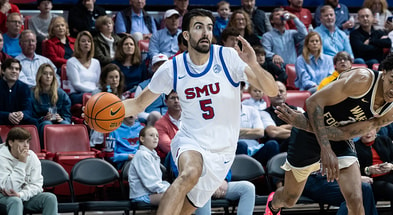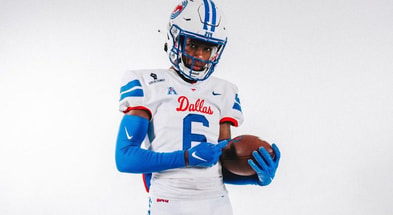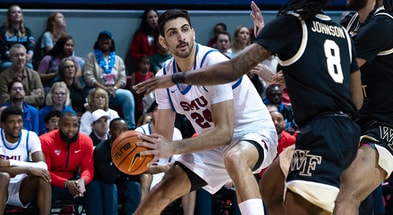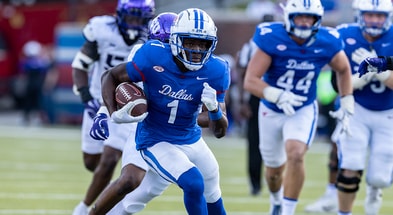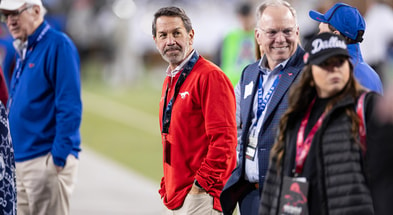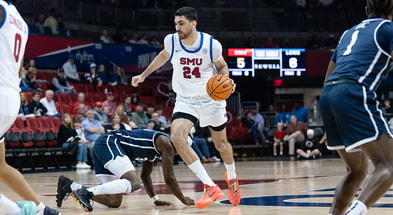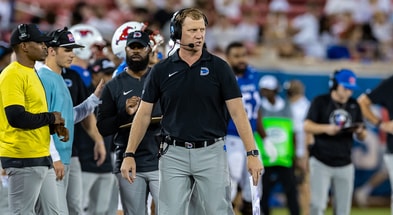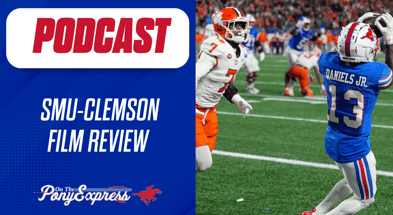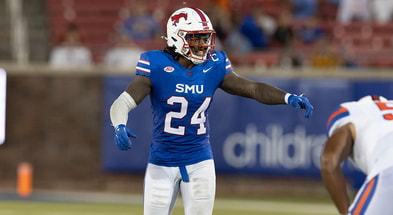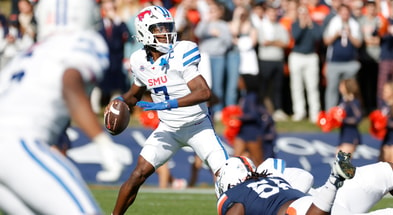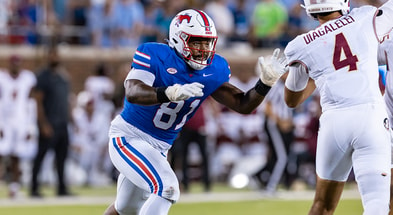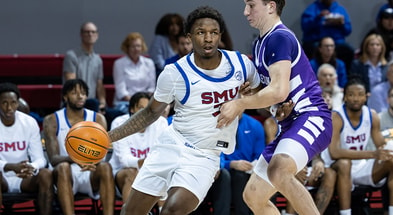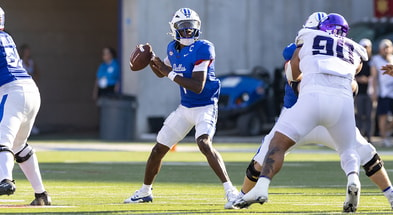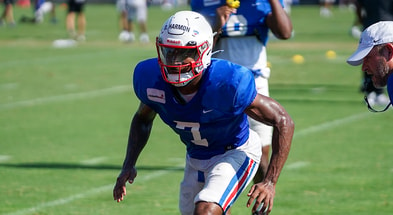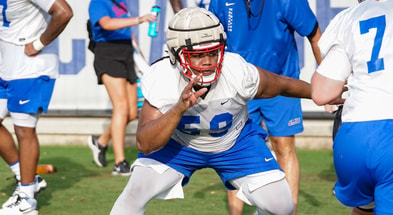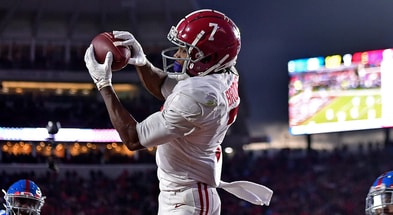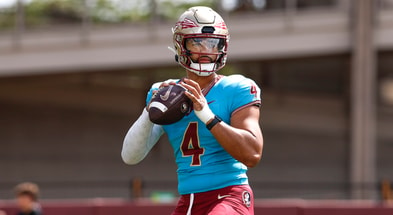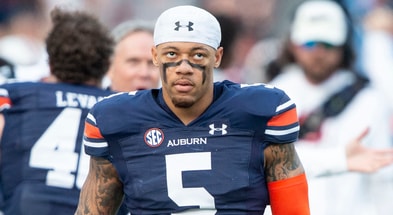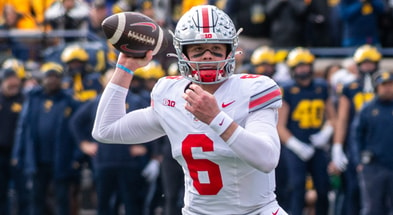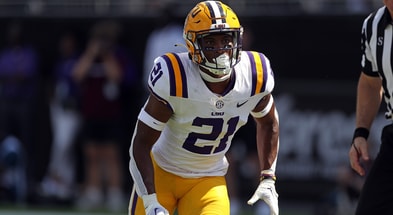What was he Thinking?

That red faded and hole-riddled Mustang Mania T-shirt had quite the 20+ year journey with its occupant. What a journey it was.
Now, it lies somewhere alone.
For the last 25 Father’s Days the U.S. Open is connected to the triumphant win at Pinehurst No. 2 in North Carolina for SMU’s own Payne Stewart.
Stewart’s 15-foot putt on the 18th hole to fend off Phil Mickelson and win on June 20, 1999 is now immortalized by a statue.
You’ve seen it. Stewart thrusting his right arm forward with a clenched fist. His right leg kicking back. His mouth screaming in exultation. The picture is seared in our minds. Only Stewart wore that Ben Hogan-style hat. Only Stewart wore the knickers pants.
This brash yet grounded marvel from Springfield, MO, who could make irons sing, was fulfilled. SMU’s 1998 Distinguished Alumni recipient reached the summit.
It’s also why we are left filled with loss.
Stewart’s final major win binds us because only four months later on Oct. 25 we lost him in a tragic plane crash in South Dakota. He was 42. A wife and two children were left with broken hearts. Professional golf suffered. SMU suffered.
Stewart’s dearest friend and former SMU teammate Lamar Haynes was scheduled to meet Stewart at Stewart’s Houston Hotel that Monday. Stewart and his agents were flying on this ill-fated private jet to inspect a potential golf course site in Dallas.
Dinner in Houston followed. Then Stewart would prepare to play the Tour Championship.
Haynes’ loss of a best friend only compounded an already horrible week. Haynes lost his mother days earlier to cancer.
“I miss him dearly,’’ the 67-year-old Haynes said. “He told me that he would come up for my mom’s funeral. I told him no, and to stay in Florida. I would plan on seeing him in Houston for the Tour Championship.
“As I was leaving the house, I saw the report on what was going on with the plane on the news. I called his phone. It went straight to voice mail. He never turned his phone off. I knew then what had happened.”
The ironic yet appropriate return of the U.S. Open to Pinehurst No. 2 this week was filled with tributes honoring Stewart. The 18th hole had a little more for Sunday’s final round. Stewart’s silhouette denoted the No. 18 flag stick. The pin placement exactly where it was when Stewart won. It wasn’t by design this National Championship was back on the 25th anniversary of one of professional golf’s signature moments. Sometimes, destiny works like that.
It came full circle on this silver celebration that another SMU great in Bryson DeChambeau, who attended SMU because of Stewart, led going into final round. Just like Stewart did.
The surreal became real Sunday. DeChambeau battled from behind, had an incredible up-and-down on 18, sunk a four-foot par putt and won his second U.S. Open. Just like Stewart did.
Fittingly, the renowned SMU Dedman family happens to own the Pinehurst Golf Resort.
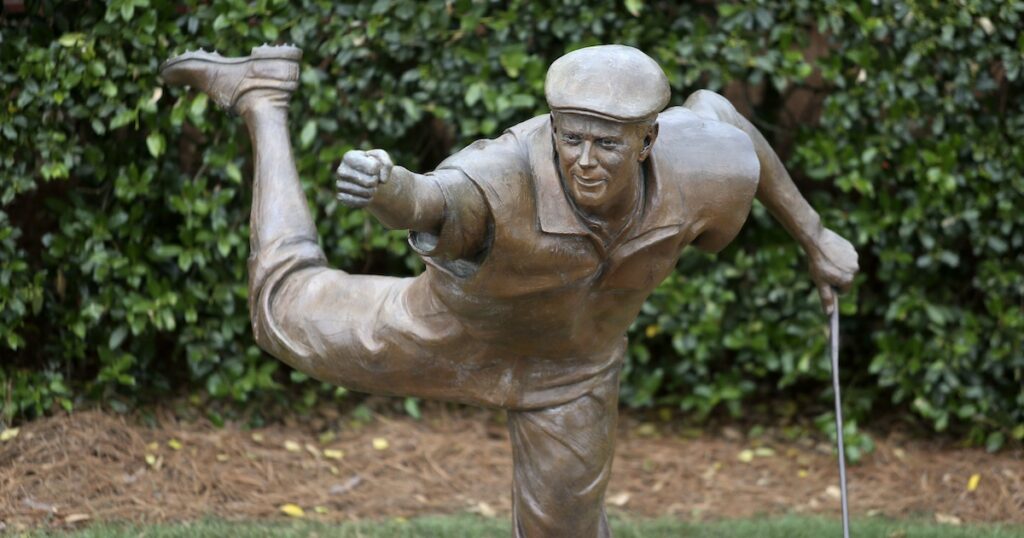
Maybe there would have been no Payne Stewart glory had it not been for his late father Bill taking his son to a Springfield, MO. men’s clothing store in the summer of 1978 and introducing Payne to the shop owner.
Haynes recalled Bill Stewart informed the owner that his son would need a job once he graduated from SMU. All that talent and all that ability had not been harnessed through Stewart’s first three years on The Hilltop.
“We had both qualified for the U.S. Amateur in 1975 (Richmond, VA) the week before we went to SMU and that’s where I met him,’’ said Haynes, a Shreveport, LA native. “When I first saw Payne hit a golf ball, I knew he was special. He hit the driver dead on. His irons were flushed. He was long back then. We just knew he was different.
“I will say Payne enjoyed himself immensely for the first three years. But that story in the clothing store scared Payne. He had all the talent. But the results weren’t there. He needed to dedicate himself to the mental side of the game.’’
A prodigy-type talent’s kryptonite are complacency and laziness. The unwillingness to marry both can summon the “what if” narrative.
What separates the good from the great professionals is the cerebral command. Scared straight, Stewart won three individual titles as a senior at SMU in 1979 and became an All-American.
Then it was on to the professional tours. Haynes and Stewart were only separated by distance. A phone call never allowed the relationship to wither.
Stewart found that the way to success on the PGA would come via the Asian tour. That’s where he found his short game, understood how iron play managed a course and that putting sealed all the work. That’s where he also met his wife, Tracey.
“He worked on his game. He learned how to be a golfer,’’ Haynes said. “He learned the Asian game. How to use the ground and bump and run the ball instead of flopping it.’’
On the course, learning how to win became the challenge. While Stewart understood what it would take to win tournaments, it still came down to doing the little things, overcoming the setbacks and returning to the No. 1 tee box the next day as if yesterday didn’t happen.
Off the course, there were the extremes. Stewart could blend in with any crowd and was easy to get to know, Haynes said. As much as Stewart thrived being the center of attention, he understood his flaws. A brash comment taken the wrong way was quickly resolved with a kind word, gesture or apology.
Stewart’s first professional win was the 1982 Magnolia Classic in Hattiesburg, MS, the same weekend of The Masters.
But as his tour ascension began that included the 1982 Quad Cities tournament win, frustrations would follow. Difficult losses highlighted by the 1984 Colonial setback to Peter Jacobson compounded the disappointment.
However, Stewart found the magic and got hot. From 1989-1993, few golfers could match his run. The streak was highlighted by Stewart’s first two major wins, the 1989 PGA title in suburban Chicago and the first U.S. Open win in 1991 in Chaska, MN (southwest of Minneapolis).
Top 10
- 1Breaking
Shedeur Sanders not drafted
Slide continues
- 2
10 Best Available Players
After Rounds 1-3 of NFL Draft
- 3
Picks by Conference
SEC, Big Ten continue to dominate Draft
- 4Hot
Jalen Milroe
Drafted before Shedeur Sanders
- 5Trending
Shedeur Sanders
Reportedly pranked by fake NFL team
Get the On3 Top 10 to your inbox every morning
By clicking "Subscribe to Newsletter", I agree to On3's Privacy Notice, Terms, and use of my personal information described therein.
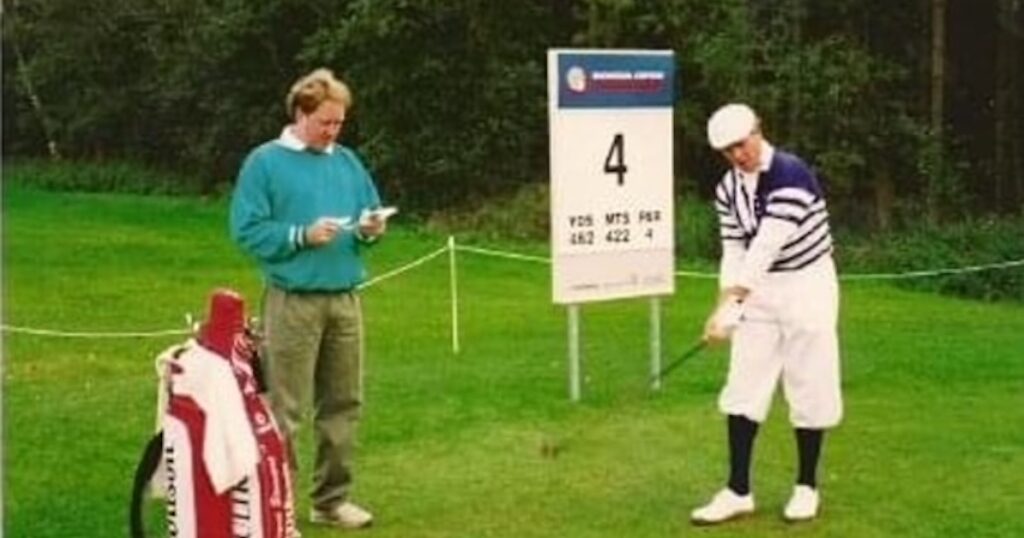
Golfers talk so much about their equipment and what it means to their game. It could simply come down to the feel of the club. The type of ball and how it reacts when it is struck. All of those matter.
While a five-year contract with Spalding (1994-98) was lucrative, it sunk Stewart into arguably the worst stretch of his career. He won only once, the 1995 Shell Houston Open.
But that was lost in perhaps the greatest regret. Stewart let a four-shot lead going into the final round of the 1998 U.S. Open at Olympic Club in San Francisco evaporate. He lost to Lee Janzen by a stroke.
For whatever reason, the irons didn’t fit. The length of them was one thing. The degree to which the club face was contoured could have been another. But when an accomplished golfer picks up a club in his hand, he just knows. Haynes said the relationship with Spalding just never worked despite the sporting giant’s attempts to work to fix the clubs.
Toward the end of the contract’s conclusion, Haynes knew his friend needed something different. Without a second thought, Haynes gave his Mizuno clubs to Stewart. Every iron reconfigured to what Stewart needed. The twist? Stewart never used Mizuno.
Couple that with a $139.99 golf bag from Edwin Watts and the SMU alum started his return to the top. However, there was an uneven start. Stewart struggled on the West Coast when the 1989 season began. A call to Haynes turned out to be medicine.
“He asked me to come to Orlando,’’ Haynes said. “After a couple of days, I noticed he was picking up the club quick. That was the opposite of his nature. I told him he needed to take it wide and slow.
“We went out and played nine holes. He was 4-under. And he said he got it. That’s how special he was.’’
Haynes could only watch the 1999 U.S. Open from his mother’s hospital room. Earlier that week, his mother had her larynx removed. The night before her surgery, Stewart called because he wanted to hear her voice one more time. That defined this friendship.
Throughout the 99th U.S. Open’s final round, Stewart battled Mickelson, an ascending Tiger Woods and Vijay Sing. On a gray and rainy afternoon turned to evening, Stewart twice surrendered the lead on the back nine only to regain it going to the 18th.
Then there was the putt. The glory. The forever moment.
“The 20-minute clip of him winning shows you how he was,’’ Haynes said. “Nobody else bothered him. He was locked in. He knew how he was going to play. He did not crack a smile. He was not easily distracted. He was in his zone.’’
For good measure, Stewart was a member of the 1999 U.S. team that posed the epic comeback to win the Ryder Cup at Brookline, MA.
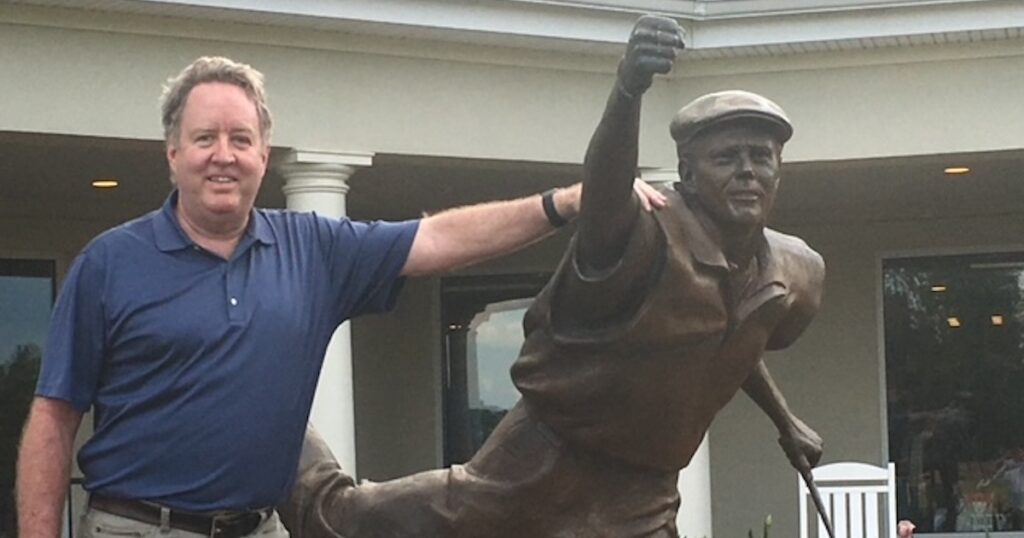
Haynes shared that final beautiful moment with his life-long friend that late September day. They met in the clubhouse and hugged. Stewart took an awaiting car back to his hotel. That would be the last time Haynes would ever see him.
For the 42 years he lived, Stewart’s life had that happiness. Haynes said Stewart was at peace with himself. Spiritually, he grew as a Christ-centered man. His children, Aaron and Chelsea, attended a Christian school. Through their experience, Stewart recognized that while fairways and greens could be a sanctuary, placing the needs of others above himself mattered more.
History has been filled with celebrities taken from us too early due to unfortunate and untimely accidents. We don’t know why that happens. But their legend and their lessons always endure.
Haynes still speaks with Tracey. It continues to uncover Stewart’s life had the substance he sought. Selfishly and understandably, Haynes would trade anything to see his friend again.
Had that been so, Stewart’s pro days would have been behind him. It would have been just enjoying a round of 18 and seeing glimpses of the man Haynes saw 49 years earlier at the U.S. Amateur.
“He loved SMU,’’ Haynes said. “He did everything he could to help the program. Whatever it means to keep his memory alive, it will be worth it.’’
That t-shirt is part of the memory.

